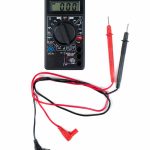The rapid shift to cleaner, more efficient transportation has seen a significant increase in the number of hybrid and electric vehicles on our roads. As consumers, it’s important to have a thorough understanding of the safety guidelines when conducting an electrical system check on these high-voltage vehicles. This document will present a comprehensive guide on how to safely execute this process.
Understanding the Hybrid Car Electrical System
Before delving into the safety guidelines, it’s essential to comprehend the basics of a hybrid car’s electrical system. Hybrid vehicles use a combination of an internal combustion engine and one or more electric motors to harness energy. This makes them more fuel-efficient and environmentally friendly than conventional vehicles.
Also to see : How can you ensure that the windshield defrosting system is effective in sub-zero temperatures?
The electrical system in a hybrid car is quite complex. It involves a high-voltage battery, an electric motor, and an intricate wiring system. The battery stores the electrical energy, which the motor uses to propel the vehicle. The wiring system, on the other hand, connects the various electrical components and helps distribute the electrical power where needed.
Safety Guidelines: High-Voltage System Isolation
Hybrid and electric vehicles use high-voltage systems which could pose potential safety hazards if not handled properly. That’s why it’s essential to isolate these high-voltage systems before you start the check. Isolation offers a safety buffer against potential electric shock.
Additional reading : What are the safety implications of installing a performance chip in a turbocharged vehicle?
In 2010, the National Highway Traffic Safety Administration (NHTSA) issued a Notice of Proposed Rulemaking (NPRM), recommending amendments to Federal Motor Vehicle Safety Standards (FMVSS). This NPRM proposed requirements for isolating the propulsion battery before carrying out any maintenance or repair.
It’s also important to use the right protective equipment. This includes insulated gloves, safety goggles, and flame-resistant clothing. Always ensure that the equipment is in good condition and has the necessary safety certifications.
Checking the Battery
The battery in a hybrid car is more than just an energy storage device. It’s the heart of the vehicle’s electrical system. Therefore, checking the battery should be a top priority during an electrical system check.
The first step in checking the battery is visual inspection. Look for any signs of physical damage, such as cracks or leaks. If the battery is damaged, it should be replaced immediately.
Next, check the battery’s state of charge. Hybrids use high-voltage batteries, which require special equipment for testing. Therefore, it’s best to take the vehicle to a qualified service center if you’re not equipped to handle this.
Remember, safety is paramount when dealing with high-voltage batteries. Always disconnect the battery before carrying out any checks or maintenance tasks.
Ensuring Proper System Functionality
After going through the high-voltage system isolation and battery check, it’s time to ensure that the rest of the electrical system is functioning correctly. This involves checking the vehicle’s electric motor and wiring system.
A simple way to check the electric motor’s condition is to pay attention to the vehicle’s performance. If you notice a decrease in power, it may be due to a problem with the motor. In that case, you should get the vehicle checked by a professional.
The wiring system is another crucial component of the vehicle’s electrical system. Check for any loose or damaged wires, and ensure all electrical connections are secure. A simple visual inspection can go a long way in preventing potential electrical issues.
Adhering to Proposed Guidelines and Requirements
Following the NPRM’s proposed guidelines and requirements is not just an option—it’s a necessity. These safety guidelines have been put in place to ensure the safety of both you and your vehicle during an electrical system check.
The NPRM has proposed that hybrid vehicles should have manual service disconnects. This is an additional safety feature that allows for the quick and easy disconnection of the high-voltage system during maintenance or repair.
Remember, your safety is paramount, so always adhere to these guidelines. The guidelines not only protect you but also help maintain the longevity and performance of your hybrid car.
Execution of Electrical Isolation in Compliance with Federal Register
When working on a hybrid car, following the Federal Register and adhering to its final rule regarding electrical isolation is of utmost importance. Electrical isolation involves disconnecting or separating the high-voltage sources from the rest of the vehicle’s system, essentially creating a safety barrier between you and the potential hazards of electricity.
This rule not only applies to batteries but also to other energy storage devices like fuel cells. Every energy storage device in an electric vehicle, including hybrid cars, must be isolated before carrying out any maintenance or repair work.
According to the Federal Register, a manual service disconnect should be available to isolate the propulsion battery in hybrid vehicles. This manual service disconnect is designed to quickly and easily disconnect the high-voltage system, thereby ensuring the safety of anyone working on the vehicle.
Furthermore, the regulation states that all exposed voltage sources in an electric powered vehicle should be protected against direct and indirect contact. This includes any parts that can become electrically energized under certain conditions. Thus, it’s crucial to inspect these voltage sources and ensure they are correctly isolated before you start working on the vehicle.
Remember, electrical safety is paramount, and adherence to the guidelines of the Federal Register helps maintain a safe environment during the electrical system check.
Conclusion: Prioritizing Safety and Compliance in a Hybrid Car Electrical System Check
Given the unique and complex electrical systems in hybrid cars, it’s imperative to prioritize safety and compliance during an electrical system check. Understanding the high voltage systems, properly executing electrical isolation, and following the guidelines detailed in the Federal Register, and other safety requirements not only ensure your safety but also protects the vehicle’s integrity.
Moreover, it’s crucial to remember that as the technology of electric vehicles evolves, so do the safety regulations and procedures. Therefore, regular updates on the latest safety standards and requirements are necessary for anyone dealing with these vehicles.
Finally, it’s important to note that some elements of a hybrid car’s electrical system check may require professional intervention, particularly when it comes to high-voltage batteries and electric motors. If you’re unsure or unequipped to handle these aspects, don’t hesitate to seek assistance from a qualified professional.
Safety is paramount when dealing with hybrid or electric vehicles, so always ensure you are well-informed and prepared before conducting an electrical system check.











